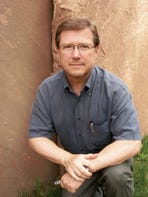Molders and moldmakers, switch on the afterburners!In my mind, the title for this Setup originally was, “What good are economists, anyway?” But those words appeared on the cover of the April 27 issue of BusinessWeek magazine. It turned out to be a good thing, as it helped me realize that’s not what I really wanted to say, even though almost all economists did not see our current mess coming, yet managed to pooh-pooh the few that did as doomsayers.
May 14, 2009
Molders and moldmakers, switch on the afterburners!
In my mind, the title for this Setup originally was, “What good are economists, anyway?” But those words appeared on the cover of the April 27 issue of BusinessWeek magazine. It turned out to be a good thing, as it helped me realize that’s not what I really wanted to say, even though almost all economists did not see our current mess coming, yet managed to pooh-pooh the few that did as doomsayers.
Currently, the economists are abuzz about a new book, Animal Spirits: How Human Psychology Drives the Economy, and Why It Matters for Global Capitalism. The authors are two respected senior economics professors, one having won the Nobel Prize for economics in 2001. I confess I haven’t read the book, but based on the publisher’s blurb, reviews, and blog comments, I gather they are saying that nonrational forces are endangering the world economy today by creating things such as fear, corruption, bad faith, and blind faith.
|
They are acknowledging what most economists ignore, yet what is to a layman the most obvious, and unpredictable, factor in the game: human nature. The term “animal spirits” comes from an economist who did not ignore them, John Maynard Keynes, who said people often act from noneconomic irrational motives, which have economic effects, often destabilizing.
Is this a problem without a solution? The authors say the problem is the solution: Acknowledge the importance of the animal spirits that cause (for example) loss of confidence, and factor them in.
This seems sensible advice in general, including for those of us in the plastics industry and the overall manufacturing sector. I will read the book because reviewers say the authors propose that the animal spirits can be used to good effect; they can make things better. I hope it’s true, but in the meantime, stick to the basics.
The molders and moldmakers we see who are doing well—and there are more than a few—generally have a solid plan and business model, plus a clear-eyed view of their markets, upside and downside. They can be opportunistic when the opportunity fits their model, and when it doesn’t, they can pass.
Speaking of opportunities, NPE2009 takes place in Chicago, June 22-26. The big show will be a rallying point for us all, a place to connect with the support we need to go forward. Life may seem mostly a do-it-yourself proposition, but you don’t have to do it alone. There really is strength in numbers, and allies.
As for that opportunity, here it is: free admission to NPE2009. Among the incentives in SPI’s NPE2009 Stimulus Package is a rollback in the visitor admission price to $60 for advance registration and $90 onsite, the prices of the last NPE. There also are discounts for groups of six or more and 20 or more. However, free is better, right? The SPI has distributed double the normal amount of VIP passes that grant free admission to show exhibitors. Some 340,000 of them are in circulation. So contact your suppliers that are exhibiting at NPE2009. Free is a very good price.
Rob Neilley
Editor in Chief
[email protected]
About the Author(s)
You May Also Like



